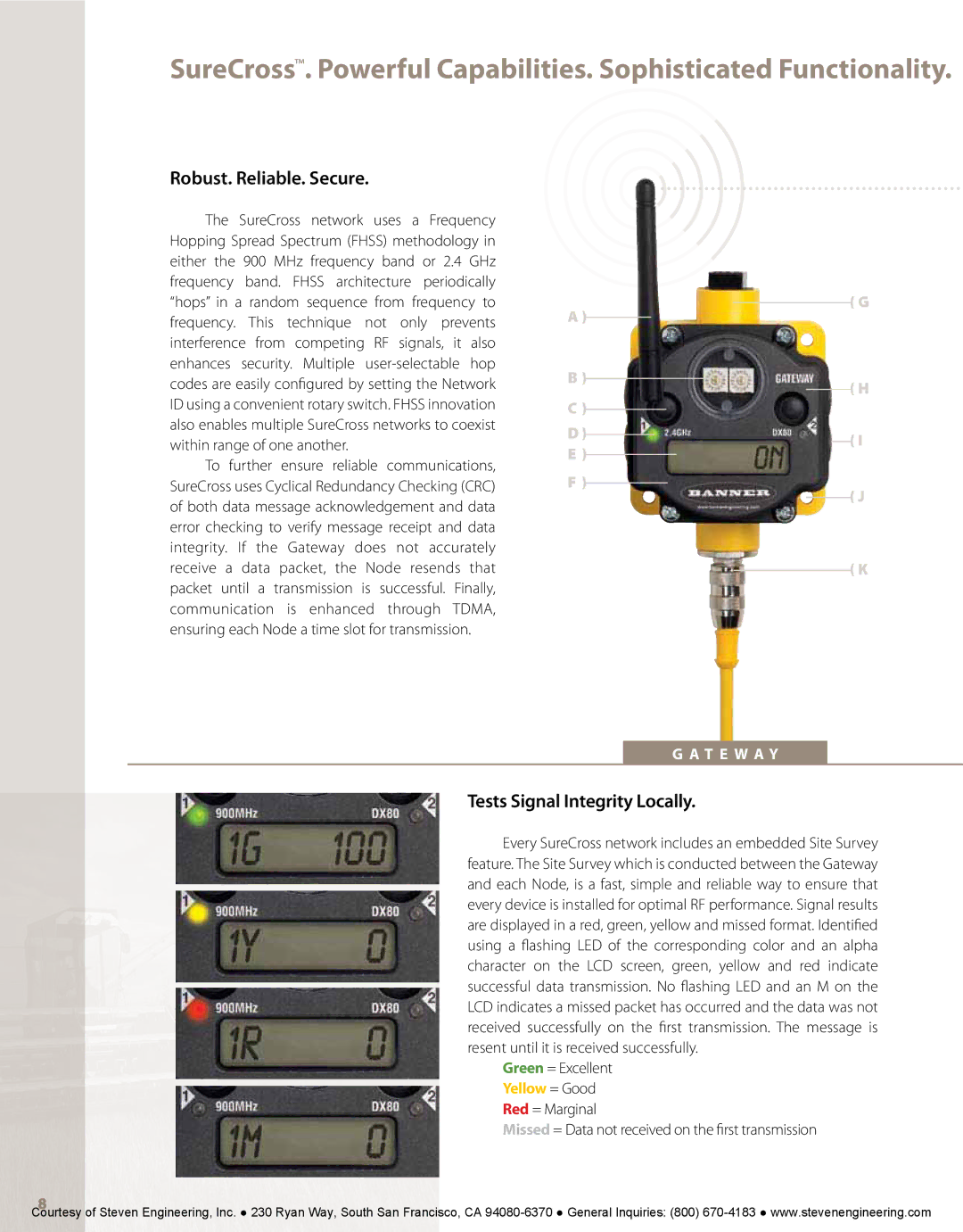
SureCross™. Powerful Capabilities. Sophisticated Functionality.
Robust. Reliable. Secure.
The SureCross network uses a Frequency Hopping Spread Spectrum (FHSS) methodology in either the 900 MHz frequency band or 2.4 GHz frequency band. FHSS architecture periodically “hops” in a random sequence from frequency to frequency. This technique not only prevents interference from competing RF signals, it also enhances security. Multiple
To further ensure reliable communications, SureCross uses Cyclical Redundancy Checking (CRC) of both data message acknowledgement and data error checking to verify message receipt and data integrity. If the Gateway does not accurately receive a data packet, the Node resends that packet until a transmission is successful. Finally, communication is enhanced through TDMA, ensuring each Node a time slot for transmission.
A ) |
|
|
| ( G |
|
|
|
| |
B ) | ( H | |||
C ) |
|
| ||
|
|
| ||
D ) |
|
| ( I | |
E ) |
| |||
|
| |||
F ) |
| ( J | ||
|
|
|
| |
|
|
|
| ( K |
G A T E W A Y
Tests Signal Integrity Locally.
Every SureCross network includes an embedded Site Survey feature. The Site Survey which is conducted between the Gateway and each Node, is a fast, simple and reliable way to ensure that every device is installed for optimal RF performance. Signal results are displayed in a red, green, yellow and missed format. Identified using a flashing LED of the corresponding color and an alpha character on the LCD screen, green, yellow and red indicate successful data transmission. No flashing LED and an M on the LCD indicates a missed packet has occurred and the data was not received successfully on the first transmission. The message is resent until it is received successfully.
Green = Excellent Yellow = Good Red = Marginal
Missed = Data not received on the first transmission
8
Courtesy of Steven Engineering, Inc. ● 230 Ryan Way, South San Francisco, CA
